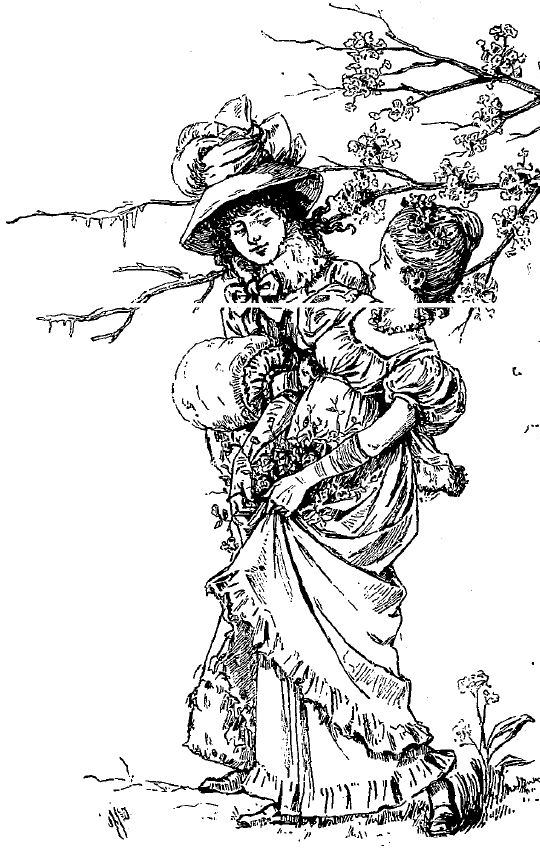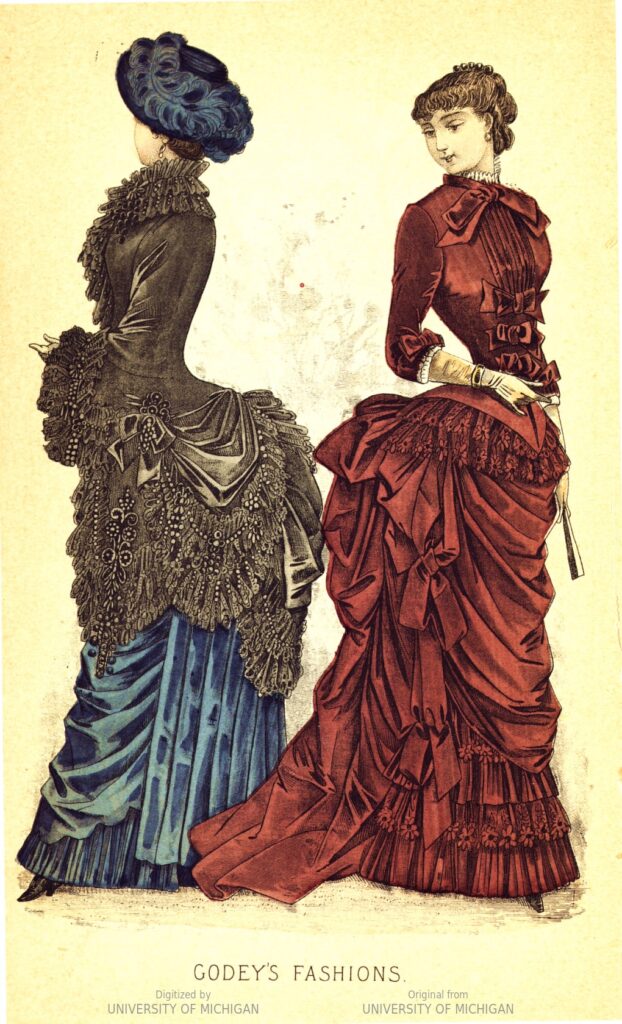January and June
By Margaret Johnson
Annotations by Josh Benjamin

Said January to June:
“Pray, let us walk together.
The birds are all in tune,
And sunny is the weather.
“And look you: I will show,
Before the long day closes,
A pretty sight I know,
Worth all your summer roses.”
Then, as they went, the air
Grew thick with snowflakes flying;
But all the roses fair
Hung down their heads, a-dying.
Cried June, in sorrow: “Nay,
We may not walk together.
You've turned my skies to gray,
And spoiled my golden weather.
“Go now, I pray you, go,
Before my last bud closes.
Take you your cold white snow,
And give me back my roses!”
Johnson, Margaret. “January and JuNE.” St. Nicholas; an illustrated magazine for young folks 10, No. 3 (January 1883): 172.
Contexts
This poem illustrates a common theme in literature and nature writing of treating nature as female. In this instance, the accompanying illustration solidifies the notion of the seasonal qualities of January and June as embodied female figures. There are many other examples where the land or other natural features are given female qualities either overtly or subtly, such as in the two canonical examples below.
Dear Nature is the kindest mother still;
Though always changing, in her aspect mild:
From her bare bosom let me take my fill,
Her never-weaned, though not her favoured child.
Oh! she is fairest in her features wild,
Where nothing polished dares pollute her path:
To me by day or night she ever smiled,
Though I have marked her when none other hath,
And sought her more and more, and loved her best in wrath.
-From "Childe Harold's Pilgrimage" by Lord Byron
I am the Earth, Thy mother;
She within whose stony veins,
To the last fibre of the loftiest tree
Whose thin leaves trembled in the frozen air,
Joy ran, as blood within a living frame,
When thou didst from her bosom, like a cloud
Of glory, arise, a spirit of keen joy!
-From Prometheus Unbound by Percy Bysshe Shelley
Women’s fashion in the 19th century, as shown in the illustration that accompanied this poem, appeared in Godey’s Lady’s Book and Magazine, which featured contents such as this list from 1884:
- Beautiful Steel Engravings.
- Excellent Portraits of Ex-Presidents of the United States.
- Full Size Cut Paper Patterns.
- Illustrations of Architectural Designs.
- Pieces of Nicely Selected Music.
- Pages Illustrating Household Furnishing.
- Pages Illustrating Fancy Work, in Colors or Black and White.
- Illustrations of Fashions, in Colors.
- Choice Recipes for the Household.
- Illustrations of Fashions, in Black and White.
Godey’s Lady’s Book vols 106-107 (1883)
Godey’s Lady’s Book vol. 107 (1883)

Resources for Further Study
- The first chapter, “Nature as Female,” of Carolyn Merchant’s The Death of Nature: Women, Ecology and the Scientific Revolution is an excellent historical overview of nature as a female figure, particularly as the idea developed during the 16th century.
- Another book by Merchant, Earthcare, “explores the many aspects of the association of women with nature in Western culture and their roles in the contemporary environmental movement. It looks at the age-old connections between women and nature, symbols of nature as female, and women’s practices and daily interactions with the earth.”
- Annette Kolodny’s The Lay of the Land includes the essay “Unearthing Herstory,” which discusses the idea of land as feminine.
- Sarah Orne Jewett, not included in this anthology, is another 19th and early 20th-century writer whose work includes ideas of nature and gender. You can read her work at the Sarah Orne Jewett Text Project.